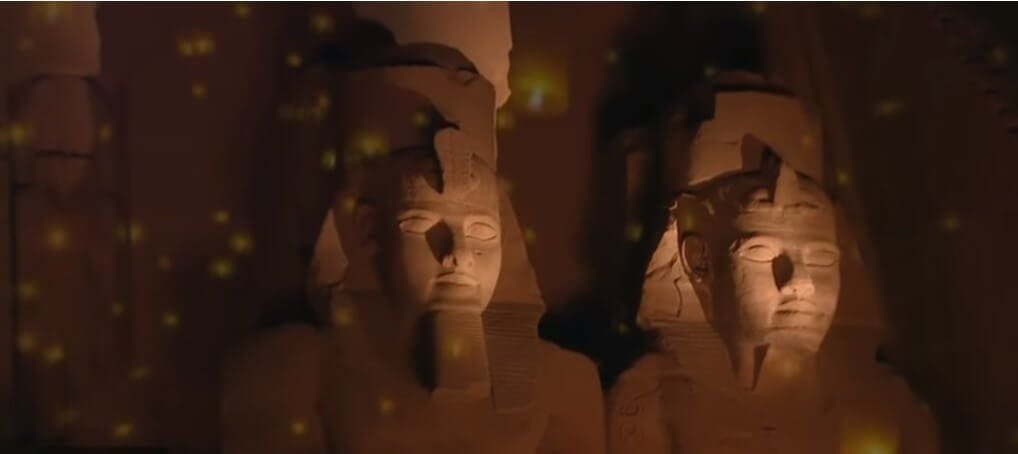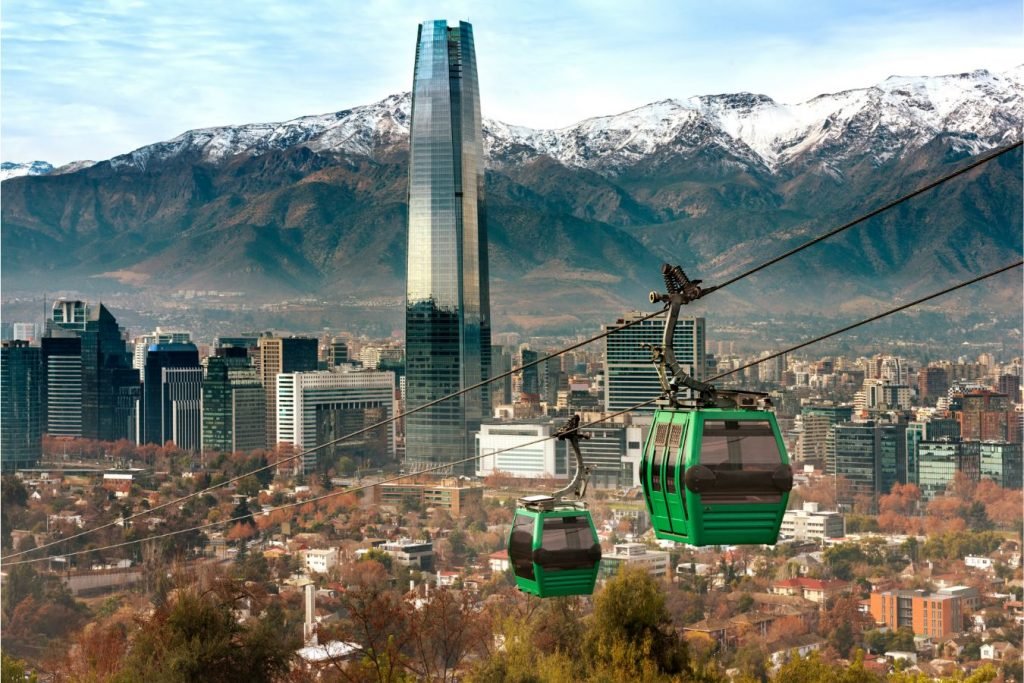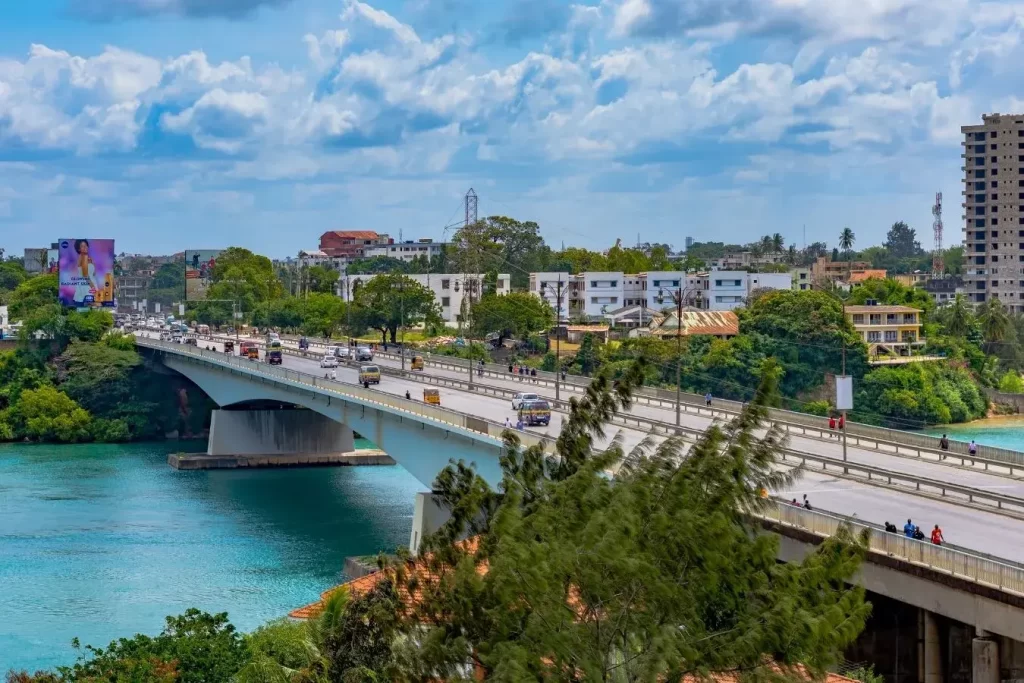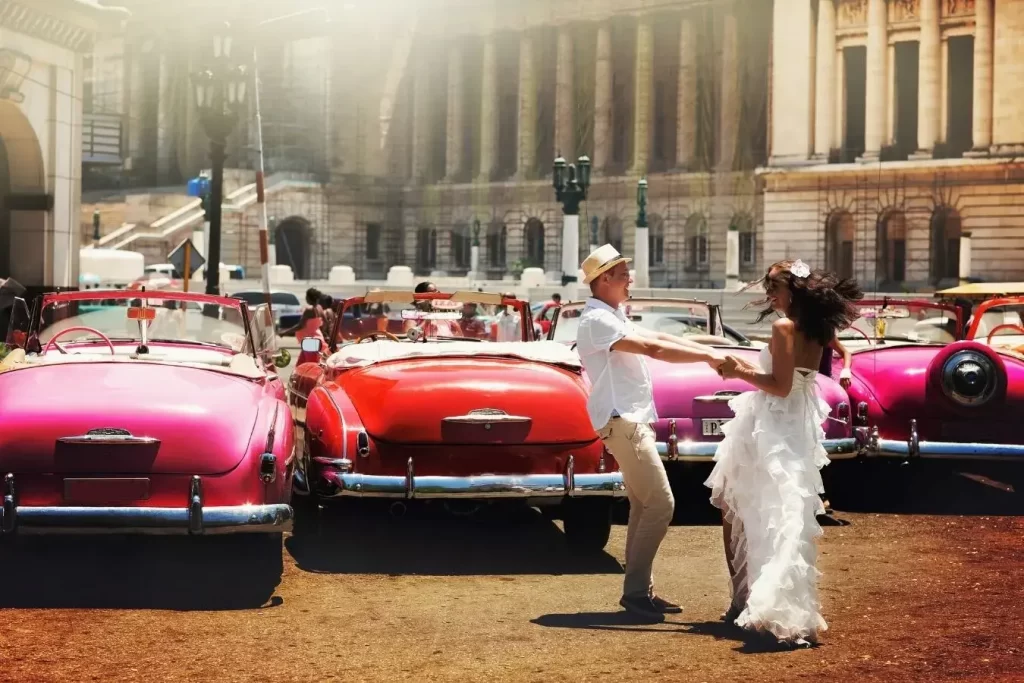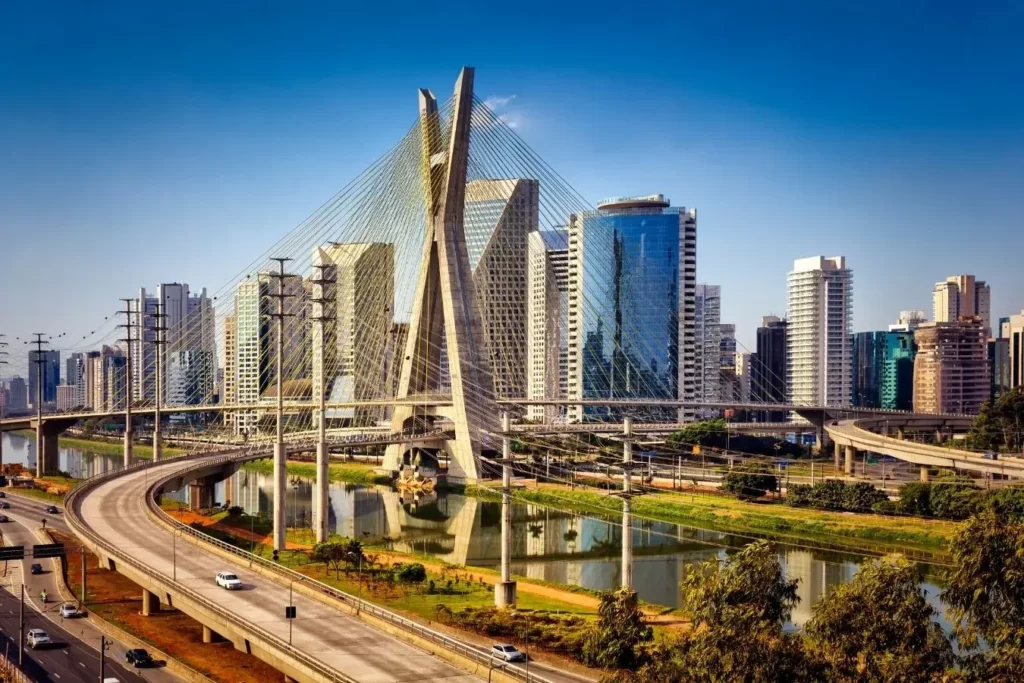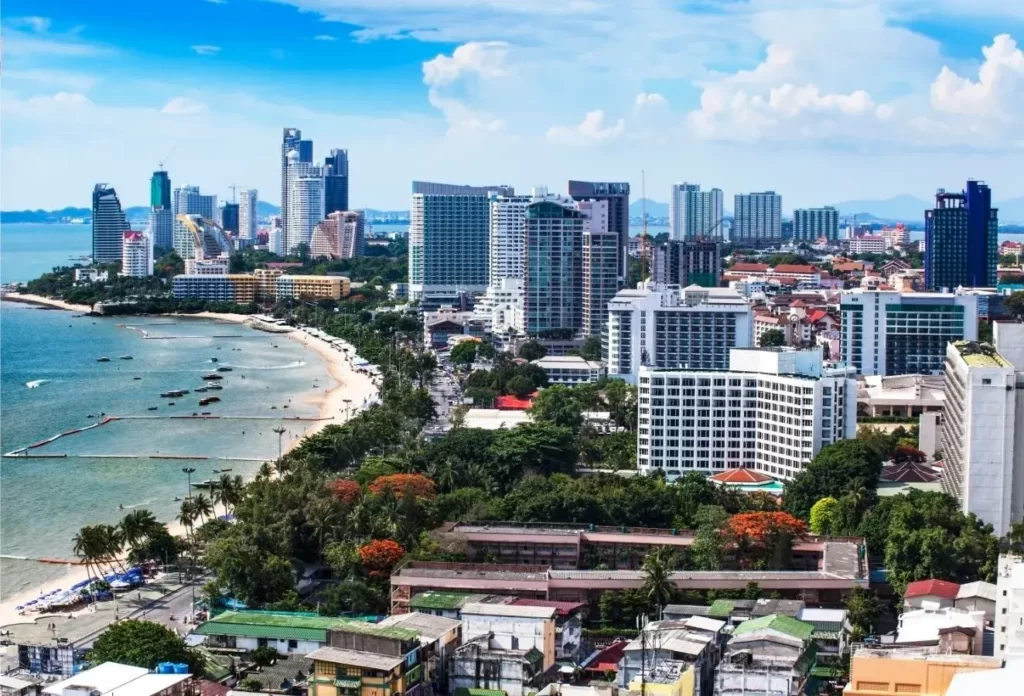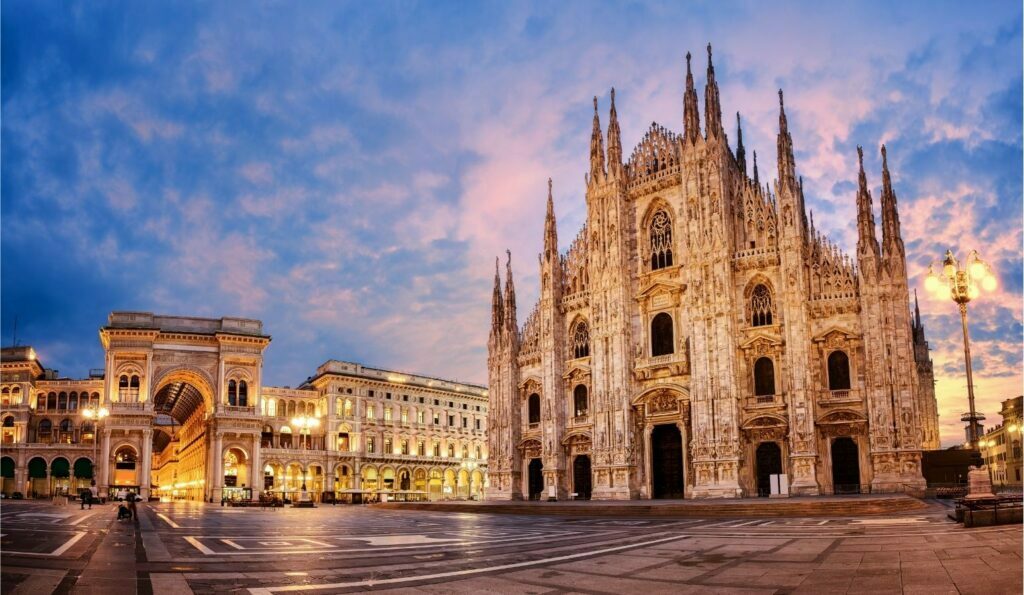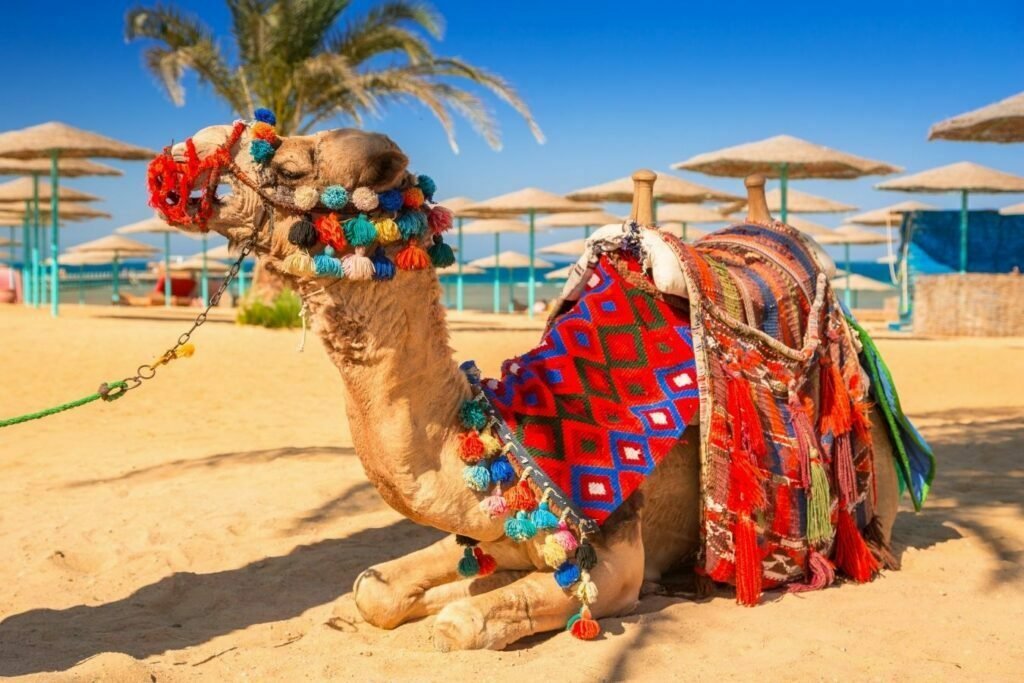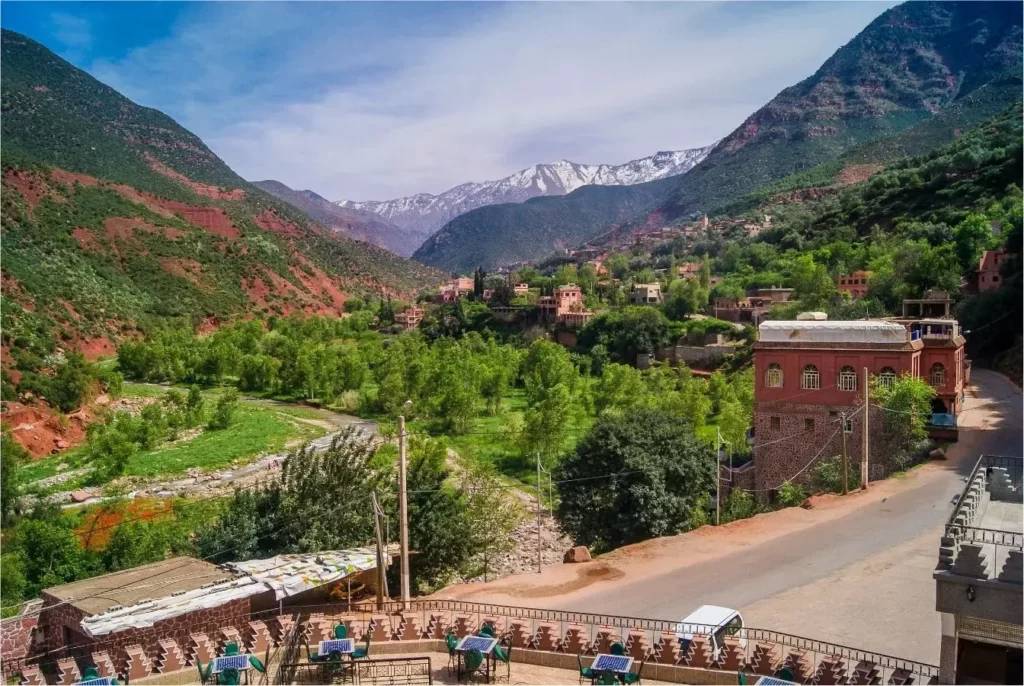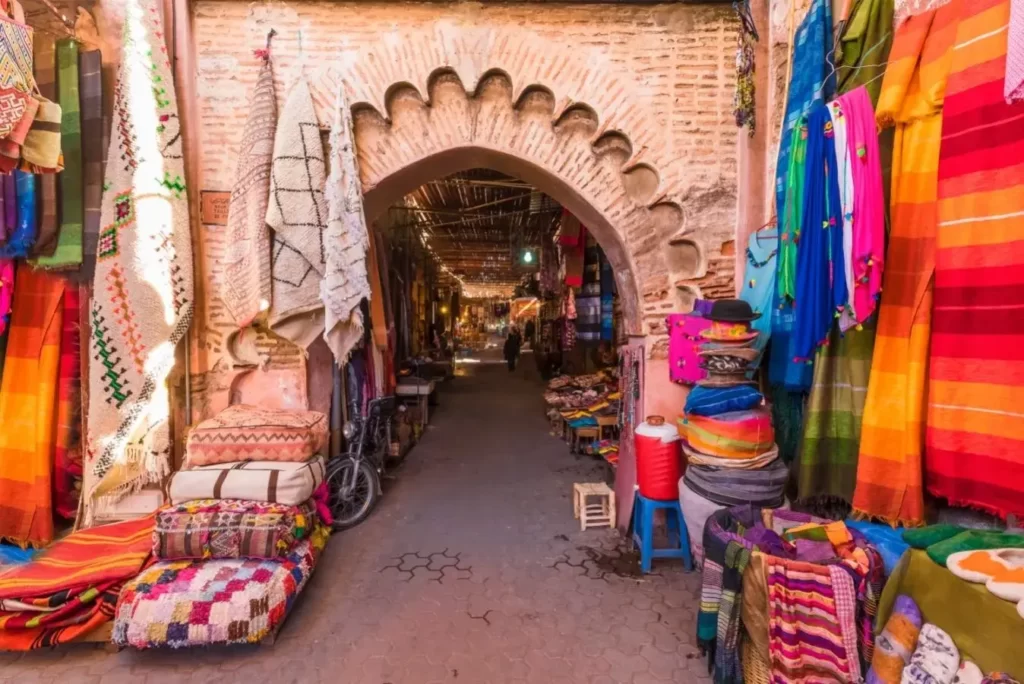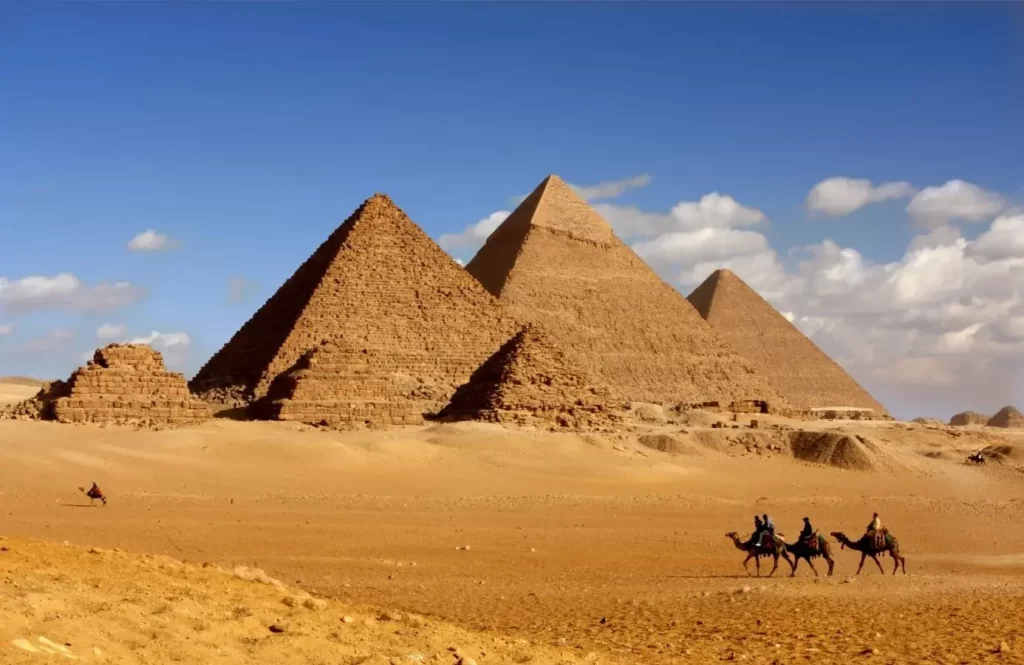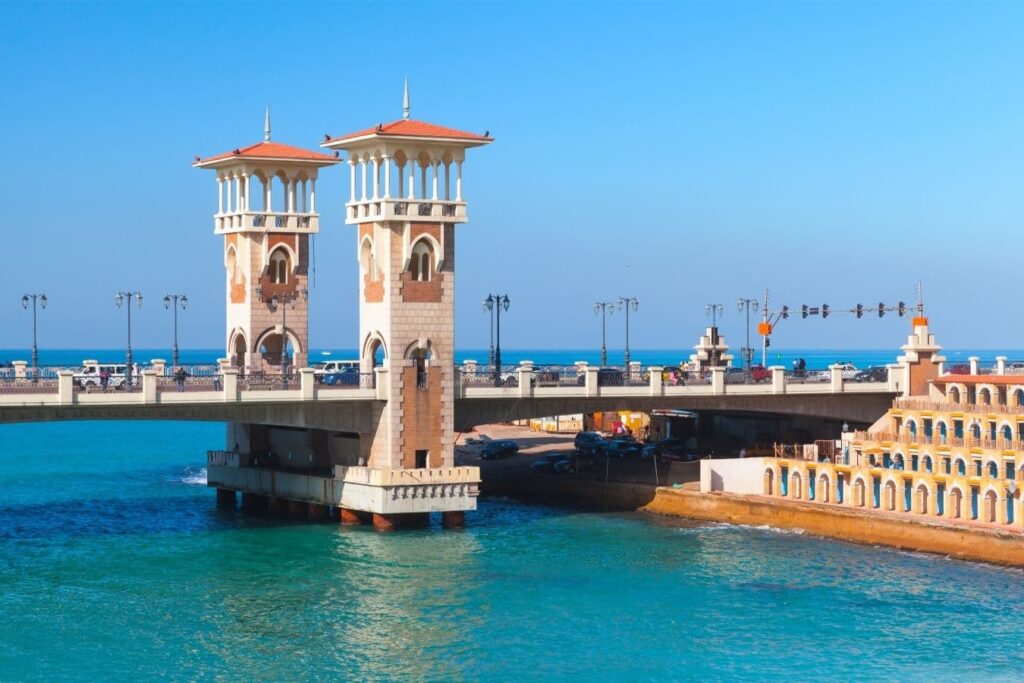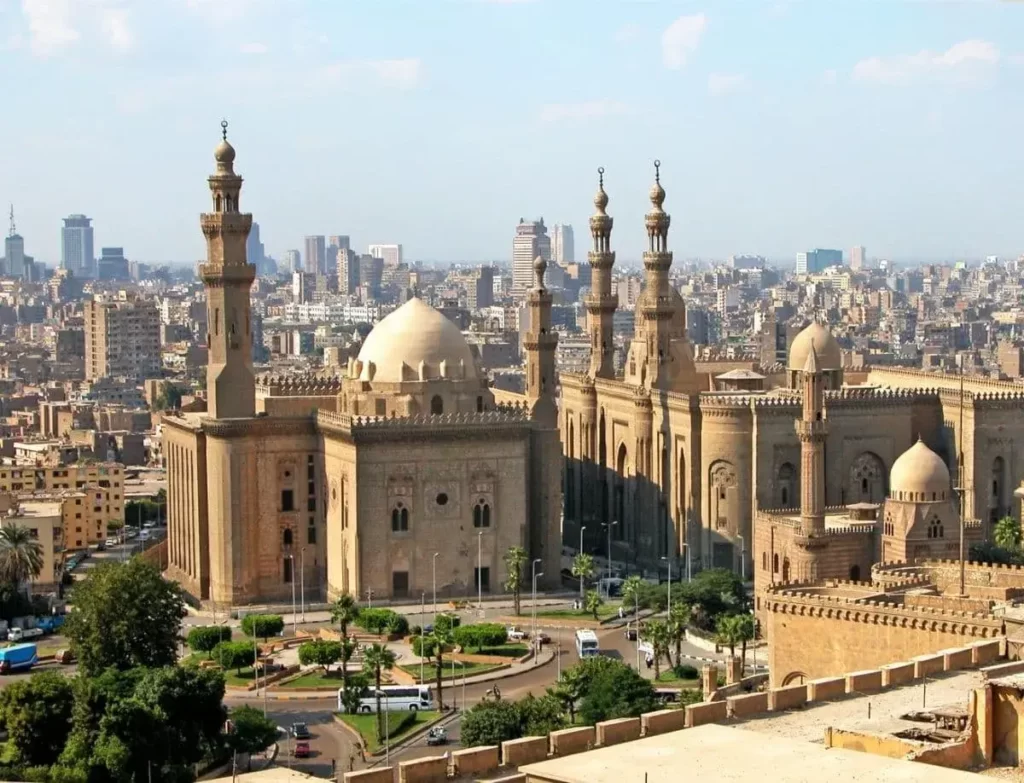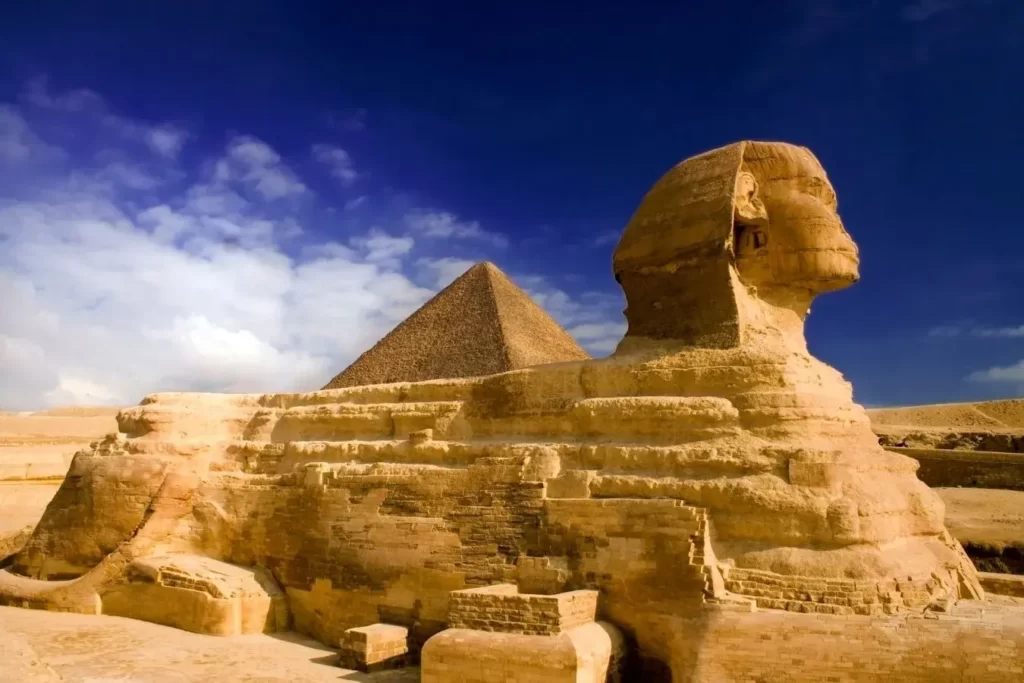Top Tourist Attractions & Things to Do in Aswan
| by Assia A. |
| Last Updated March 24, 2023 |
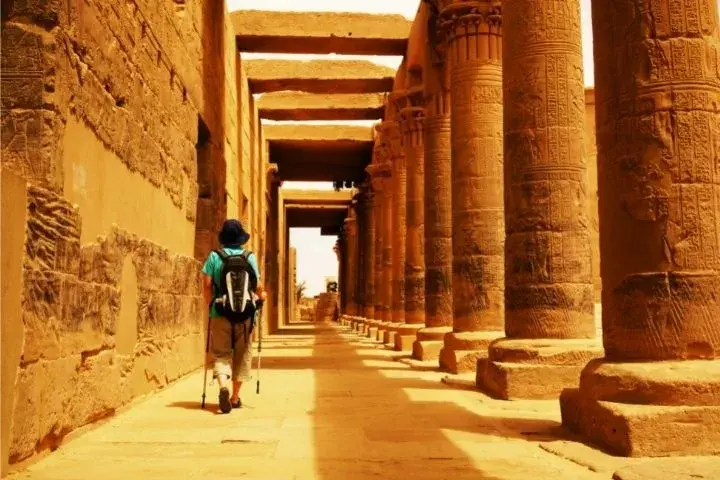
Aswan is a more tranquil destination, set along the Nile River’s west and backed by orange sand dunes. The town offers the possibility to relax for a few days and enjoy the beautiful Nile after your busy days in Cairo or Luxor. it’s also considered to be one of Egypt’s top tourist destinations.
Aswan is the base town for excursions to the temples of Philae and Kabasha as well as the temple of Ramses II at Abu Simbel. It is also the best place to start if you want to explore the temples of Kom Ombo and Edfu between Aswan and Luxor. Take the ferry to Elephantine Island and you’ll pass by the colorful Nubian villages.
A camel ride to the east bank of the Nile to visit the desert monastery of Saint. Simeon, or a cup of tea at the riverboat restaurants while enjoying the amazing views of the old city and the Nile at sunset.
Take a felucca ride around Aswan’s islands at sunset to experience the most popular activity here. This is also the best way to see the local sights.
Experiencing Aswan’s charm is best done by hopping onto a felucca and viewing the town from the watery highway that once made it an important trading post.
Here is a recommendation list of tourist attractions in Aswan and things to do to enjoy your time.
Elephantine Island
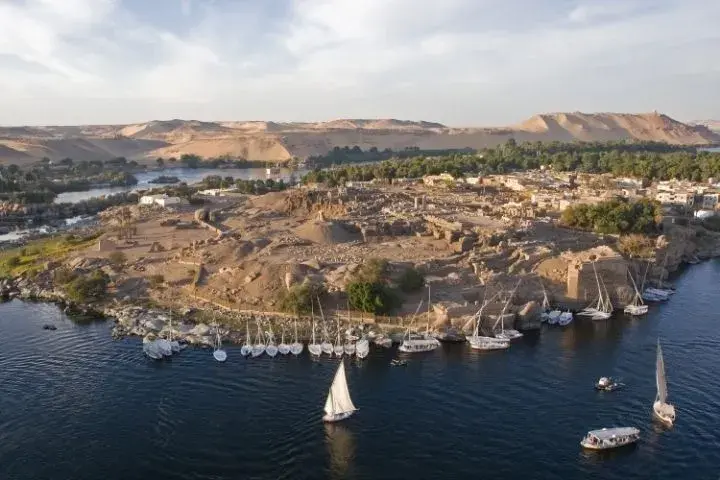
Elephantine Island is a popular tourist attraction in Aswan due to its iconic villages with colorful mud-brick houses, palm trees, and picturesque landscapes.
Aswan’s most ancient settlement, the Ruins of Abu are located on the southern end of the Elephantine Island, and contains the Old Kingdom Temple of Khnum, and the Temple of Satet.
In the same area you will find Aswan’s Museum, a beautiful building from the late 19th century that contains an impressive collection of artifacts spanning the history of the Elephantine Island up to the Roman era.
Near the Ruins on the eastern embankment, there is The Nilometer. It was used by Ancient Egyptians to measure the increase and decrease of the Nile River’s water level, in order to predict the height of the annual flood, so they could then predict their harvest.
Once you have done exploring the ruins, head north into the island to wander the streets of the small villages of Koti & Siou, which offer a unique glimpse of life in the region. Their houses are painted with vibrantly colored designs, and in the narrow alleyways, sheep graze and chickens peck, while the farmers still work their land the traditional way as they have done for centuries.
You can catch a rowboat from the boat landing on the western side of the island in Siou, to Kitchener’s Island (though nobody actually calls it that). Officially known as Aswan Botanical Gardens, this island was once the property of Lord Kitchener who turned it into a green garden of exotic plants from Asia and Africa.
There are regular local ferries from the boat landing downtown Aswan to Elephantine, or you can consider renting a felucca to sail you around the island.
Philae Temple
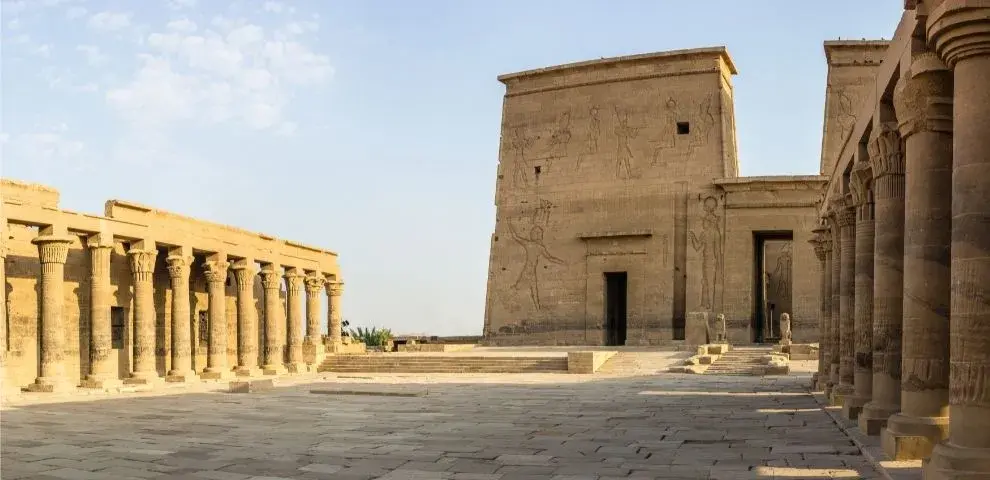
The temple of Isis (better known as Philae Temple) is a truly beautiful attraction in Upper Egypt. Built to honor the goddess, Isis. In the central court of the Temple, the mammisi (birth house) is dedicated to Horus, son of Isis and Osiris.
The intricate details, the beautiful reliefs, and the symmetrical design of its structure make it an excellent subject to paint (Victorian artists used to love this site). It is also a favorite subject for photographers.
The temple, just like Abu Simbel, was saved by UNESCO’s rescue project and was relocated from its original spot-on Philae Island to Agilika Island where it sits today. This occurred after the flood of Lake Nasser inundated the island.
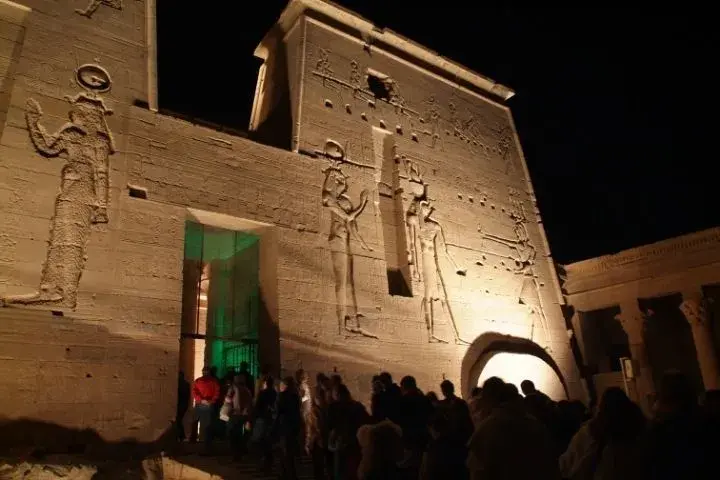
The Temple of Isis, a center for the ancient cult of Isis, is the main part of the Philae complex on the Nile delta. But the island also has other notable temples and structures, including the Temple of Hathor and Trajan’s kiosk, and other buildings from the Roman and Byzantine periods.
The island and its temple complex are reachable by boat, so you can enjoy the stunning views of the Nile on your way there. Philae’s ticket office and the pier are 8km south of Aswan. But most people come here with a tour which includes Abu Simbel. The sound and light show at night is an extraordinary show that shouldn’t be missed.
Abu Simbel
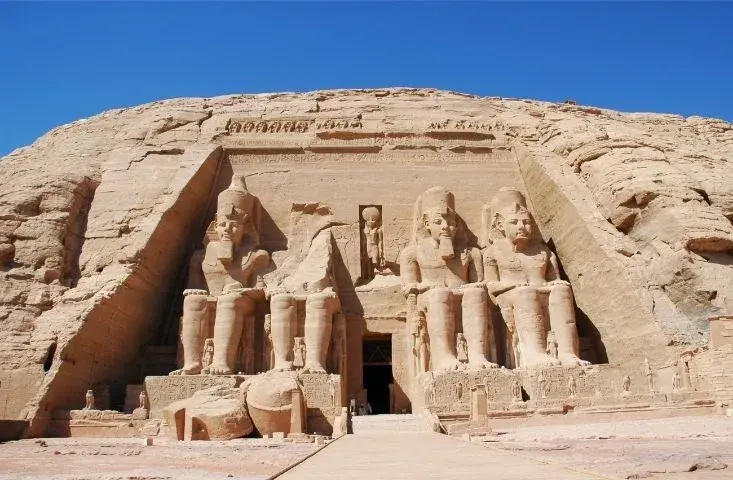
If you have time for only one day trip from Aswan, visit Abu Simbel.
Even in a country with over 200 temples, Abu Simbel is still unique. The vast structure was built for the pharaoh Ramses II to declare him as (God). It also shows off the pharaoh’s power and influence. The exterior walls are decorated with colossal statues that stand outside and protect the interior of the temple which is decorated with lavish wall paintings.
Abu Simbel is one of the world’s most well-known ancient monuments. It is famous for its megalithic proportions, and also for the incredible engineering that UNESCO carried out in the 1960s to save it from disappearing under the rising waters of Lake Nasser.
Visiting Abu Simbel today is just as much about admiring the triumph of an international effort to save the temple, as it is about gaping in wonder at Ramses II’s awe-inspiring building works, itself.
The majority of people come to Abu Simbel on a guided tour. The temple is 280 kilometers south of Aswan, the transport in a minibus or a car takes around three hours.
This private day tour to Abu Simbel takes you by private vehicle and includes lunch and entrance fees. The Egyptologist Tour Guide is also included in the fees, a detailed in-depth tour of the temples with three hours on-site.
The Unfinished Obelisk

Aswan’s Northern Quarry is home to the legendary Unfinished Obelisk – a massive chunk of stone that’s over 40 meters long. This huge block of granite was carved directly out of bedrock but cracks appeared and left unfinished. Its creation was ordered by Hatshepsut in (1508–1458 BC).
It is estimated that if finished, the obelisk would have weighed over 1,000 tons a weight equal to about 200 African elephants, it would have been the largest ever hewn. Many of the traces of the work of ancient stonecutters can be seen around this area.
It’s really easy to walk to the Northern Quarry from Aswan’s downtown area. It’s just east of the Fatimid Cemetery and the Nubian Museum.
Aswan High Dam

Aswan’s High Dam is one of the most important architectural achievements in modern Egypt. Completed in 1970, the dam is the largest embankment dam in the world. It is also a vital source of electricity for Egypt, helping power the country’s economy, and President Nasser’s greatest achievement with the help of the Soviet Union.
It took 42.7 billion cubic meters of stone to build the Great Wall, with a total length of 3.6 kilometers. The reservoir of the dam (Lake Nasser), Egypt’s largest man-made lake, has a capacity of 135 billion cubic meters.
At the deepest point, the reservoir is 980 meters (3,036 feet) deep and at the top, the water is about 40 meters (131 feet).
Trips to the Aswan High Dam are included on day trips to Abu Simbel, but if you want to visit on your own, you can easily hire a taxi to get here.
Tombs of the Nobles
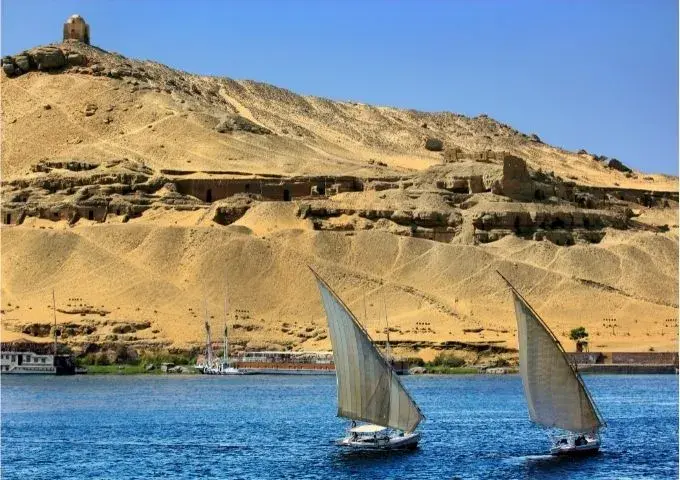
This set of stone tombs, chiseled out of the West Bank’s cliffs, was where the Elephantine Island’s governors, priests, and other grandees were buried during the Old and Middle Kingdoms.
The tombs are accessed by a series of steep staircases just to the left of Gharb Aswan’s boat landing.
The first tombs you enter are those where the 6th-dynasty governors Mekhu & Sabni are buried, tombs number 25 & 26. Both tombs contain some artistry that is simple and roughly worked.

Up the path to the right is Tomb 31, which belongs to Prince Sarenput II, a contemporary of King Amenemhet II of the 12th Dynasty. This is one of the largest and well-preserved tombs in the necropolis.
Beyond the tomb, the chamber is a small corridor with three niches on either side. Look to the left of the first niche to see a beautifully-preserved colored figure of the dead man and his son.
Tomb 34 is (Harhuf’s tomb) with inscriptions that record its owner’s successful trading expeditions in Nubia.
In a few steps from here, you will find the Tomb of Setka (First Intermediate Period), which has badly-damaged wall paintings that still have astonishingly vivid colors and are among the few surviving examples of decorative art during that period.
Monastery of St. Simeon
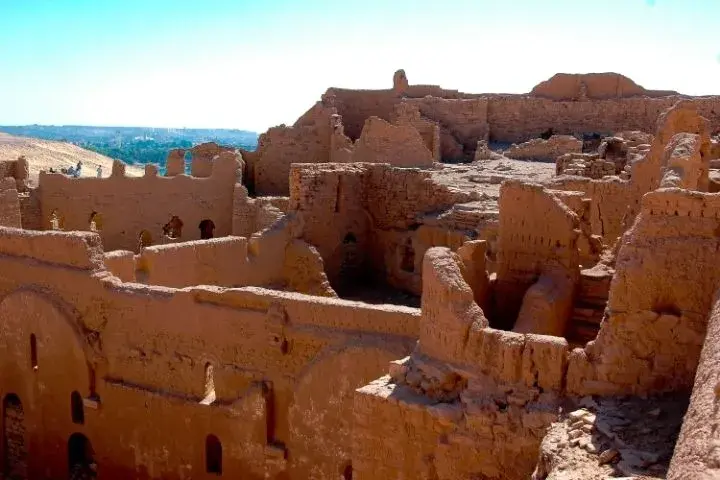
The monastery of Saint Simon lies in the desert of the southern part of Egypt on the Nile’s west bank. It’s one of Egypt’s largest and best-preserved Coptic monasteries, founded in the 7th century and abandoned in the 13th century due to water shortages.
Inside the monastery’s courtyard, an aisled Basilica takes up the southern side of the monastery.
At the east end of the wide nave, once covered by two domes, is the large apse, and three rectangular niches under semi-domes. The central niche contains the remains of a fresco depicting Christ enthroned between angels.
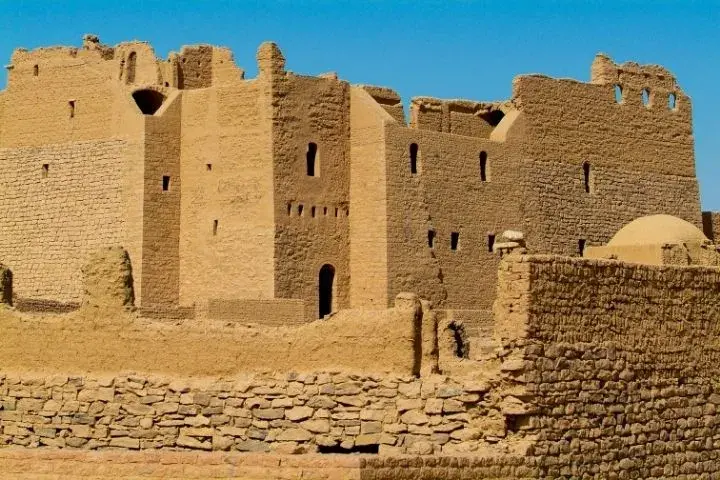
There are various subsidiary buildings and grottoes to the north & west of the church, while the living quarters are on the eastern side.
Upstairs, you find more well-preserved barrel-vaulted living quarters, including the monk cells, with brick beds and Coptic and Arabic inscriptions on the walls.
Standing on the monastery’s fortified walls overlooking the dunes gives some sense of the isolation the monks must have faced.
To get to the monastery, you can either take a boat or a Felucca. However, once you get there you will have to take a camel ride for 30minutes or hike into the sand.
The Camel-Trek on Aswan’s West Bank

Camel-trekking is a best way to travel between the Tombs of the Nobles and the Monastery of St. Simeon on Aswan’s west bank. The trek, across the desert plain and backed by golden dunes, reveals how harsh is the desert environment that border the Nile’s narrow strip of lush farmland.
You can hire a camel near the ferry landing at the Tombs of the Nobles. The journey to the monastery takes around an hour and is best done earlier in the morning to avoid the heat and enjoy the sights.
There are also camels for hire at the felucca landing-pier near the monastery, for a shorter camel ride.
Sail on a Felucca

While there are many other ways to see the sights, the felucca is by far the most enjoyable and authentic way to see Aswan and the surrounding area. Feluccas are traditional Egyptian boats made from wood and tar. They are equipped with an open deck and a single mast. The open deck can accommodate up to 12 people, while the single mast provides necessary shade as well as sails which keep the boat moving at a constant speed.
There are many sailing trips you can find in Aswan. The Felucca captains will be waiting lined up along the Nile River and will be glad to take you on an Egyptian sailing trip on the Nile River.
A short tour of one to two hours sails around the islands in the central Aswan area gives great views of the rippling desert dunes of the west river bank, the lush palm-tree-sprinkled islands, and the city on the east bank.
For longer boat tours, plan a half-day or full-day itinerary that includes stops to swim, see some of the central Aswan hot spots, such as the archaeological sites on Elephantine Island, Monastery of St. Simeon, Tombs of the Nobles, and also Kitchener’s island.
You can also take a day-long felucca trip to Seheil Island, which is home to a Nubian village and a cliffside covered in inscriptions.
Nubian Museum
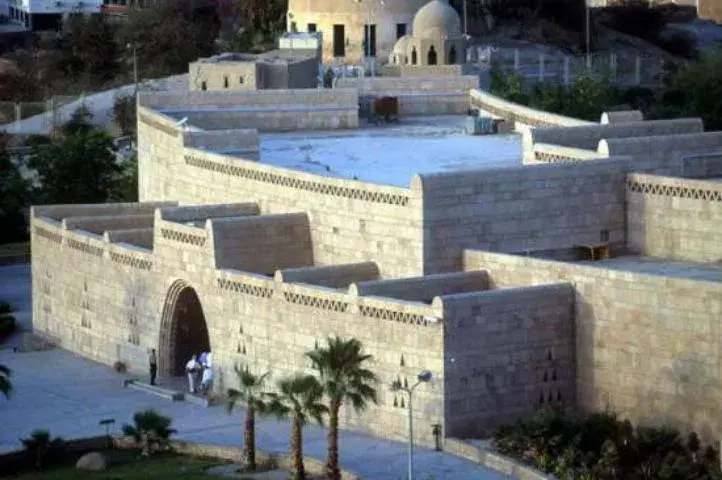
The Nubian Museum in Aswan is one of Egypt’s best museums and a must for anyone interested in the history and culture of both ancient and modern Nubia. It documents the richness of Nubian culture that was buried deep beneath the waters of Lake Nasser and the Aswan Dam.
Today, we can see a wonderful collection of artifacts from the Kingdom of Kush (ancient Nubia). The collected pieces date back to 2450 BC and there are plenty of black-and-white photos that show UNESCO’s extraordinary project to save Philae Temple and Abu Simbel from the rising waters of the dam (you can also see many photographs of the many other monuments and treasures that are now lost forever under the lake).
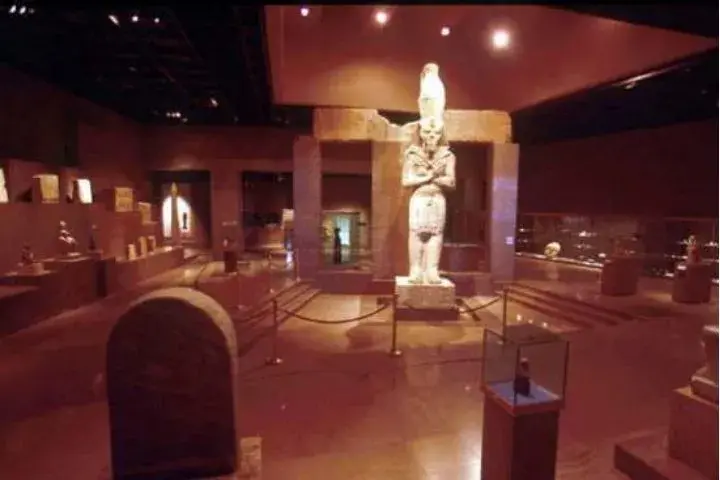
The artifacts in the museum include statues of Ramses II and Amenras, the Shpatka’s head, and the black-granite statue of Tahraqa.
The Fatimid cemetery is not to be missed in Aswan just behind the Nubian Museum. The cemetery caretakers will take you on a walk and tell you all about the graves. It won’t take long but it’s always worth it when in Aswan.
Lake Nasser & Temples of Kalabsha
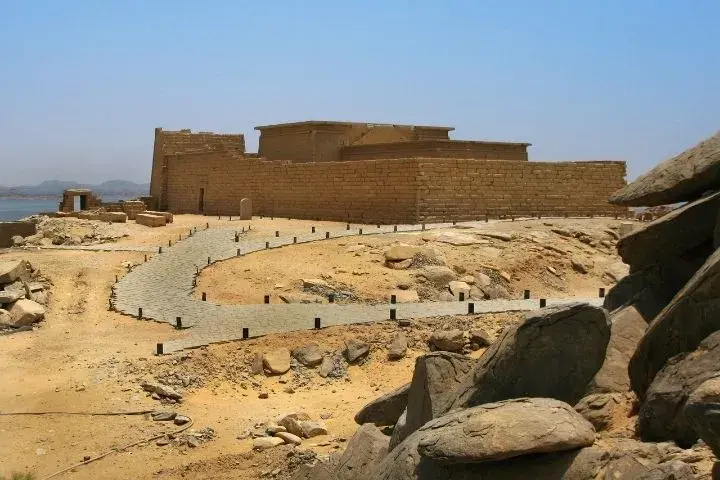
This group of temples was all saved from a watery end thanks to UNESCO and now sit on the banks of Lake Nasser.
Kalabsha Temple is the best preserved of the three temples in the area, dating from the time of Roman Emperor Augustus.
It is one of the most imposing monuments in Nubia after the Temple of Abu Simbel, this temple was built on the site of an earlier temple founded by Amenhotep II and then renewed during the Ptolemaic Dynasty.
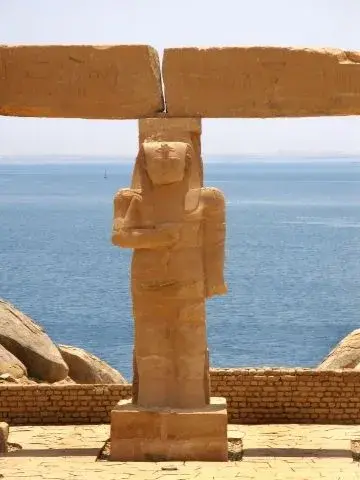
This group of temples was all saved from a watery end thanks to UNESCO and now sits on the banks of Lake Nasser.
Kalabsha Temple is the best preserved of the three temples in the area, dating from the time of Roman Emperor Augustus.
It is one of the most imposing monuments in Nubia after the Temple of Abu Simbel, this temple was built on the site of an earlier temple founded by Amenhotep II and then renewed during the Ptolemaic Dynasty.

The decoration of the temple was never completed and the reliefs that do exist are crudely executed. The temple was converted into a church during the Byzantine era.
To the northwest lies the Temple of Beit el-Wali, built by Ramses II in ancient times. It consists of a vestibule, secondary chamber, and sanctuary.
Western Quarry (Gebal Simaan)
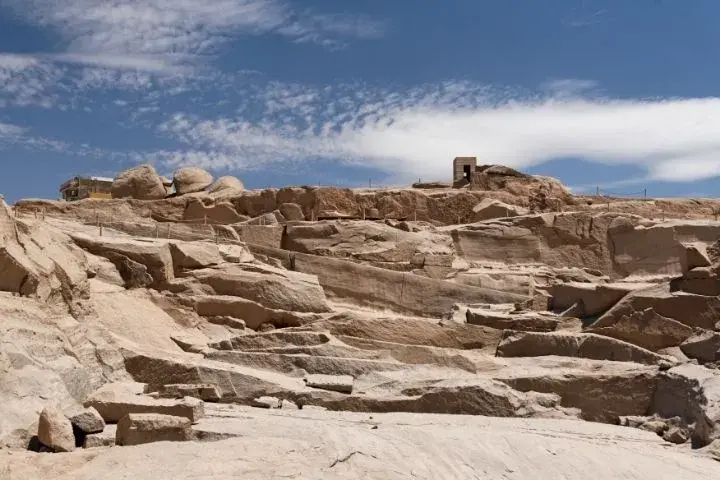
For those looking for an adventure, the ancient quarry at Aswan is an exciting stop for an archaeological excursion.
Many of Ancient Egypt’s most recognizable statuary started their lives from this quarry. Archaeologists believe that the Colossi of Memnon in Luxor come from this quarry.
You can still see the tracks where huge blocks of stone were dragged down the Nile to grace the pharaohs’ temples.
If you’re up for a camel adventure with no roads in sight, this place will give you plenty of fun memories.
Camel drivers can be hired at the Gharb Aswan boat landing. The journey takes about 30 minutes and is fairly affordable.
Wadi al-Subua
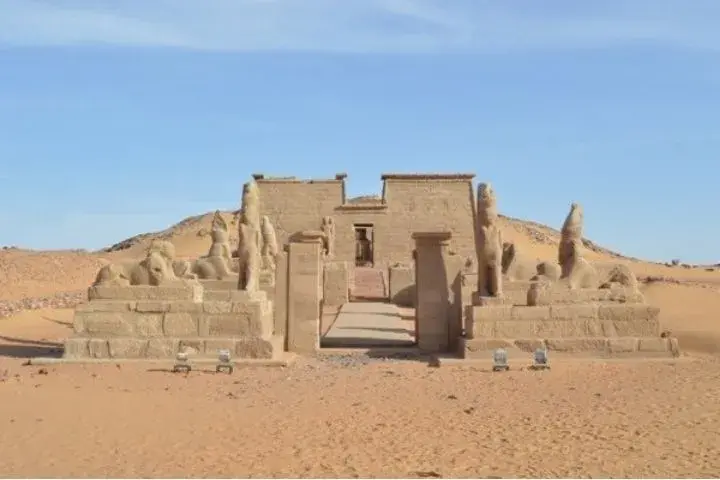
The Temple of Ramses II, is the main tourist attraction in Wadi Al-Subu’a Valley, containing some excellent statuary and a beautiful melding of ancient Egyptian reliefs and later Byzantine Christian paintings. The temple was used as a church in the early Christian period.
The Temple of Wadi al-Subua, like Philae and Abu Simbel in the Lake Nasser area, was saved by the UNESCO project from the rising waters of Aswan’s High Dam. Today it is safe and accessible to visitors.
It’s 211 kilometers south of Aswan and just a short distance from two other temples that are worth visiting after this temple.
You can climb to the top of the gateway at the Temple of Dakka, or scramble up the stairs leading to the roof at the Temple of Maharaqa, for the amazing views over the desert.
Aga Khan Mausoleum
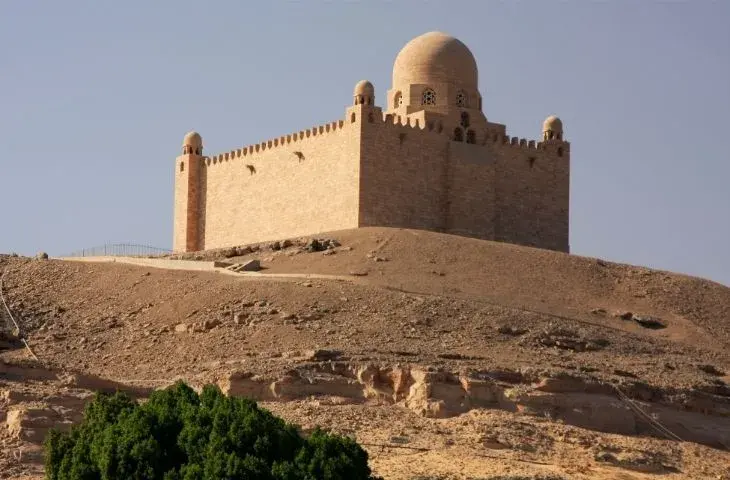
Standing prominently atop the West Bank’s cliff is the Aga Khan Mausoleum, built to hold the tomb of Sir Sultan Muhammad Shah (1877-1957). The leader of the Shi’a Islam Nizari Ismaili sect.
He is remembered for the various charitable acts he did, including the set-up of educational and medical institutions across Africa and Asia. He also played an influential role in discussing the partition of India.
Although born in Pakistan, the Aga Khan always had a close connection to Egypt, as he spent many summers with his family in Aswan.
The mausoleum is impossible to miss, sitting at top of the mountain facing the Nile.
Old Cataract Hotel
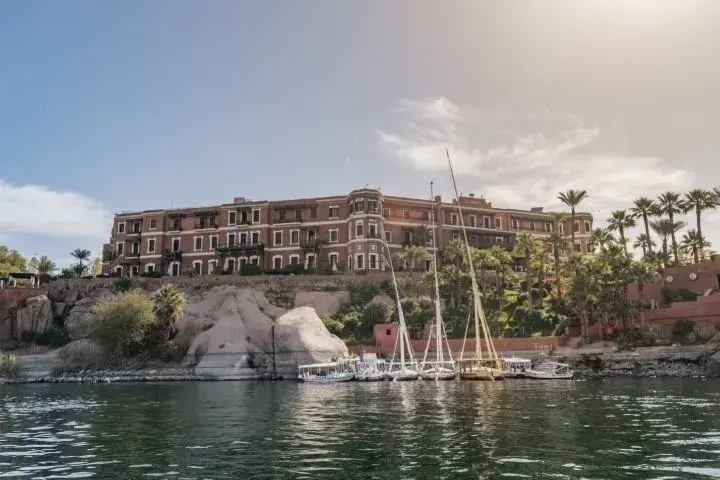
The ornate facade and lush gardens surrounding this old-timer hotel are one of the main tourist attractions in Aswan, with many visitors stopping off on their sightseeing felucca tour of Aswan’s riverbank.
The hotel’s claim to fame is that Agatha Christie started writing “Death on the Nile” while staying here, the hotel is also featured in the film.
If you want to live the moments of “Agatha Christie” but can’t afford to stay here, the hotel’s terrace is the hotspot for high tea in Aswan.
Drinking tea while Sitting at a beautiful table overlooking the Nile, enjoying a delicious selection of scones and sandwiches while admiring the most stunning views of the Elephantine Island and the sand dunes of the West Bank beyond, this is a truly unique experience.
Aswan Souq

Aswan is a wonderful place for shopping. If you’re looking to pick up some souvenirs, try shopping in the city’s Sharia El-Souk district.
The stalls are full of spices and perfumes, traditional galebeyas, scarves in every color, basketry, and silver.
It’s a fun place to browse and for the most part free from the vendor hustle that you get in other parts of Egypt.
You may want to look out for Nubian jewelry and needlework, which showcase the distinctly different culture of Upper Egypt’s population.
If you’re addicted to the refreshing local drink, karkadai, you’ll notice that buckets of dried karkadai (hibiscus) can be bought by weight to recreate it back home (don’t miss it!).
Tours & Excursions in Aswan
Visa & Health Requirements
Please make sure you check all the information you need to know about the passport, visa, and health requirements of your destination.
Check out all the data provided by IATA (International Air Transport Association)
Read More:
Plan a Perfect Trip to Egypt | Egypt Travel Guide
Top-Rated Tourist Attractions in Egypt
Top-Rated Tourist Attractions & Things to Do in Cairo
Top-Rated Tourist Attractions & Easy Day Trips from Luxor
Top-Rated Tourist Attractions & Things to do in Alexandria
Top-Rated Tourist Attractions & Things to Do in Hurghada
Top-Rated Tourist Attractions & Things to Do in Sharm El-Sheikh
Share This



